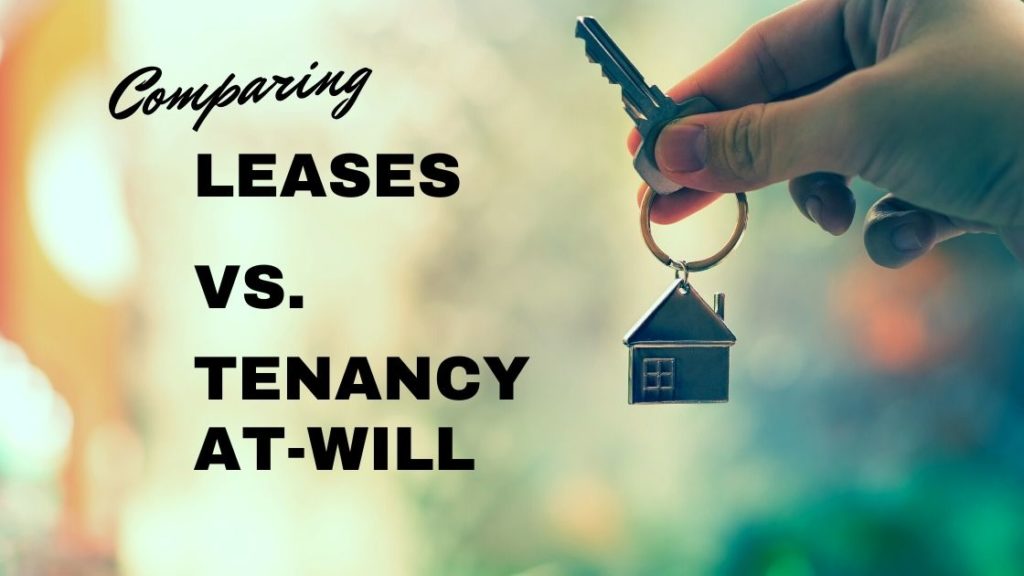
One of the first decisions that you must make as a landlord is whether to offer/require a lease or tenancy at will. There are pros and cons to each, so it’s important to understand them and how they may impact your options and rights as a landlord. Here are some of the key differences between leases and tenancy-at-will.
Rental Rates
First and foremost, you should consider rental rates. With a lease, you set a specific rate for a certain length of time, such as one-year. At the end of that timeframe, you must renew the lease at either the same or a different rate. The renewal process facilitates the discussion about market rents and makes it easier to apply increases. With tenancy-at-will, it’s common to see higher starting rents given the lack of commitment period. There’s no reminder to discuss rental terms, so it’s easier to set it and forget it. However, the monthly rental period can also make it easier to adapt to changing market conditions more frequently.
Tenant Turnover Rates and Timeframes
The most important difference between leases and tenancy-at-will is tenant turnover rate and timeframe. With leases, you can carefully plan for transitions during ideal times of year, such as the spring and summer. Avoiding colder winter months generally makes it easier to find new tenants. Additionally, marketing and qualifying tenants will occur less frequently, which reduces overhead cost and the time needed to manage your rental properties.
Alternatively, tenancy-at-will offers more flexibility. For example, if you decide to sell, you can accommodate borrowers who prefer the property be delivered vacant. They may wish to owner occupy or already have tenants in mind. Avoiding the signing of a new lease every year or every few years might also be better for long-term tenancy.
Tenancy Termination
Another key factor to consider is the termination process for leases versus tenancy-at-will according to Massachusetts law. With leases, you can only terminate with cause. The language in the lease contract should clearly outline those potential causes, such as failure to pay rent. With tenancy-at-will, you don’t need a qualifying cause. Whether they are behind in rent, they are difficult to deal with, you want to replace them with more ideal candidates, or you want to vacate the unit to renovate or sell, you need only give a month’s notice to terminate a tenancy-at-will.
Important Questions for Leases and Tenancy-at-Will
Leases provide stability and predictability while tenancy-at-will offers flexibility. Which one is right for you? Think about your personal preferences for risk versus reward. Consider your future plans for the property and how the tenancy arrangement might make that easier or more difficult. Review the rental market and what the norms are; will one option make it more difficult to find tenants than the other. How might your decision influence the type of tenants you attract? These are all very important questions to answer before deciding between leases and tenancy-at-will. If you’re uncertain about these, speak to an experienced real estate investor or property manager so you can make an educated decision for your investment properties.


